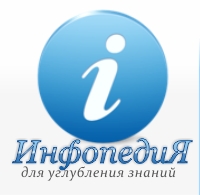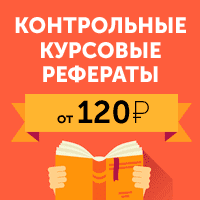

Мы поможем в написании ваших работ!
ЗНАЕТЕ ЛИ ВЫ?
|
XI. Переведите текст E. Расскажите о кровеносных сосудах и дайте обоснование их роли в организме человека.
Содержание книги
- Their work helped to establish that the muscles were the active agents of motion ( движение ) and contraction.
- IV. 1. Прочтите текст G. 2. О чем говорится в каждом абзаце?
- My friend is greatly excited because his son has the disease of the coxofemoral joints. The boy cannot walk and must be in bed.
- Road, moan, soap, load, foam, soak, throat.
- The muscular structure of the heart consists of two parts - the muscular layers of the atria and the muscular layers of the ventricles.
- The aorta- from the upper part of the left ventricle. 2. The shape of the vessels- when they dilate. 3. The right lung is- than the left one. 4. The lungs are- with the pleura.
- Эта экспериментальная работа будет проведена на будущей неделе. 2. Эти данные применяются на практике. 3. Меня будут обследовать несколько врачей. 4. В пятницу нам читали лекцию поанатомии.
- Text E. The Alimentary Tract
- В Москве издается много медицинских журналов. (many, published, journals, Moscow, are, in, medical)
- The blood (to carry) to the liver passes through the portal vein.
- XVI. Read and translate Text H.
- At the rate of, per minute (day), to depend on (upon), on physical exertion, to discharge from the hospital, to discharge out bile, to pump blood through arteries, to be followed by.
- The rate of heart contractions is regulated by two groups of nerve fibers. It varies in different persons and at different age.
- В норме сердце бьется со скоростью 60-70 ударов в минуту.
- Text С . The Corpuscular Elements of Blood
- XVIII. Read Text D and say what data important for a future doctor are given in it. What will you try to remember?
- It was estimated that blood was a fluid tissue.
- На заседании кафедры он доложил о результатах своих опытов.
- W. Harvey found out the heart changed its colour during the contractions.
- The methods of investigation the scientist had included in his research helped him to determine the origin of the pulmonary disease. 4. The faculty my brother is in trains pediatricians.
- M. Sechenov investigated blood gases in 1858. И. М. Сеченов исследовал газы крови в 1858 году.
- The new methods of research had been included into my work. 2. The course of treatment has been prolonged. 3. The structure of the pancreas will have been described in the new book.
- Не may examine the patient. 2. He may be examining the patient now.
- Для этой цели; 2) полный покой; 3) распространяется по коре головного мозга; 4) имеет большое защитное значение для; 5) глубокий спокойный сон; 6) жизнедеятельность.
- Different actions which are repeated every day before going to bed also act as stimuli which produce the process of inhibition.
- XI. Переведите текст E. Расскажите о кровеносных сосудах и дайте обоснование их роли в организме человека.
- Грамматика: заменители модальных глаголов. Способы выражения долженствования. Производные местоимения: some, any, no, every. Случаи употребления глаголов to be, to have.
- One can impair the health if one does not sleep for along period of time.
- Чем могут быть заменены модальные глаголы can, may, must?
- Everyone knows that phagocytes destroy microorganisms.
- The environment must be provided with the proper amount of oxygen for the growth of aerobic microorganisms.
- To give in, to give up, to give away; 2) to get up, to get down, to get in, to get off.
- If it is necessary a nurse will come to the patient’s house to give him the administered injections or carry out any of the doctor’s administrations.
- What is the time now? 2. My father visited Moscow many times. 3. We have classes in Physiology three times a week. 4. What time do you have lectures in Microbiology?
- The doctor administered the patient two tablets of tetracyclin to be taken orally and a cough mixture to be taken three times a day.
- IX. 1. Read Text D. 2. Try to understand the meaning of the words in bold type from the context. 3. Retell the text.
- The nurse was applying cups when the ward doctor entered the ward.
- The surgeon asked the patient if he had been operated on the year before 2. If you have a sore throat, you must gargle it several times a day.
- Reading books is useful. 1. The reading of books is useful.
- The results of the treatment of the patient depend on his- in time. (having been operated on; being operated on; having operated on; operating)
- VI. 1. Прочтите и переведите текст D, пользуясь словарем.
- Restless, overdosage, intramuscular, sleepless, overweight, intravenous, painless, intratracheal, overestimate, useless, overwork.
- Thirdly, a physical examination is important to establish an exact diagnosis. You might ask why is an exact diagnosis important? It is needed for the administration of a proper treatment.
- Unit 1. The diseases of the respiratory tract
- X. 1. Прочтите текст А. 2. Найдите предложения, в которых употребляется одно из времен группы Perfect Continuous, переведите их.
- Dullness, enlargement, intensity, improvement, clearly, moisture, poisonous, smoothly, thinnish, useless, preventive, severely, indication.
- X. Read and translate Text D using a dictionary,
- Симптомы, характерные для первичного туберкулеза; в пораженном легком; клинические проявления; положительная проба; уплотнение легочной ткани; первичный туберкулез; перкуторный звук.
- Summarize the essence of the second paragraph.
- Какими глаголами выражено сказуемое в этих предложениях и что нового вы заметили в конструкции сложного дополнения.
Text E. The Blood Vessels, Large and Small
The raw materials1 for the energy that powers man’s every thought and action are transported in the blood. The enriched2 blood is carried in a network of small vessels, capillaries to each cell. These capillaries are so small that 60 long ones or 120 short ones would stretch only the length of this line of type. There are so many capillaries in the body that, laid end to end, they would ring the equator3 more than twice.
Blood coming into the capillaries from the arteries has been enriched with oxygen in the lungs or with food from the digestive system. The walls of the capillaries are only one cell thick; so thin that oxygenated blood is able to pass its oxygen and food to the body’s cells and to receive from the cells their waste. The spent blood then flows from the capillaries into the veins, which direct it back to the heart. In the heart the blood enters the arteries and is carried by them to the lungs and digestive system to be oxygenated and enriched again before returning to the capillaries.
The body’s largest blood vessels, the aorta and the pulmonary artery, are about an inch in diameter. Arteries have thick elastic walls, the pulsations of which assist the heart in pumping. Vein walls are more rigid. Many of them, particulary in the lower part of the body, have valves which prevent a backflow of blood.
Notes
1 raw materials - сырые продукты 2 to enrich - обогащать 3 would ring the equator - опоясали быэкватор
CLASS ASSIGNMENTS
Revision
XII. State the suffixes in the following words and translate them:
a) the nouns: efficiency, slowness, division, usage, inhibition, tiredness, significance, development, difference, infancy, closure, passage;
b) the adjectives: medical, pulmonary, different, cortical, respiratory, various, specific, primary, considerable, effective, extensible, Italian;
c) the verbs: summarize, communicate, analyse, dilate.
XIII. Translate the following sentences paying attention to the infinitives used after modal verbs:
Can such a serious complication have occurred in this case? 2. The disease can’t have developed so quickly. 3. The pain may not have been controlled yet. 4. The doctor may have administered this patient a light diet.
The nurse must have already given the injection. 6. His vision must have been checked up last week.
XIV. Turn the direct speech into indirect:
1. The surgeon asked: “Do you often develop pain in the stomach after meals?” 2. The eye doctor asked: “Do you drop the medicine regularly?”
1. The cardiologist asked: “When did you develop the pain in the heart area?”
2. The physiologist asked: “Where will the stimuli continue to come during a sound quiet sleep?”
XV. Give extended answers:
1. What do the contractions of the heart produce? 2. What is the cardiac cycle composed of? 3. What is the role of the ventricles and atria? 4. Describe the pulmonary circulation. 5. Describe the systemic circulations. 6. What corpuscular elements compose the blood? 7. What heart sounds can one hear listening to the heart? 8. Where is the first (second, third) heart sound heard? 9. What do heart sounds help the doctors to determine? 10. What did
I.M. Sechenov determine when he investigated the blood gases? 11. Describe the process of respiration. 12. What functions does the human brain perform?
13. What reflexes are called conditioned (unconditioned)? 14. Why is sleep necessary for any living being? 15. What is the process of inhibition?
XVI. Read Text F. Translate it. Memorize the figures.
Text F. The Cardiac Rhythm
One knows that during the diastole the atria and ventricles take in (принимают) the blood. It has been determined that during the systole the atria and the ventricles discharge out the blood. The diastole of the ventricles takes place during the systole of the atria, and the systole of the ventricles takes place during the diastole of the atria. These functions of the atria and the ventricles compose the cardiac rhythm.
The cardiac cycle lasts 0.9 second (″). The contraction of the atria lasts 0.2″ and that of the ventricles 0.3″. When the atria contract the ventricles are at rest. The diastole or the period of rest of the cardiac muscle lasts 0.4″.
So during one cardiac cycle the ventricles work 0.3″ but rest 0.6″. The period of contraction of the ventricles is longer than that of the atria and the systolic blood pressure is always higher than the diastolic one. Such an interesting cardiac rhythm which enables the heart to rest longer than to work is very important for the blood circulation.
If the period of cardiac rest has become constantly shorter, the rate of heartbeat increases. Such an increased rate of heartbeat may affect [ə'fekt] (поражает) the heart and produce different cardiac diseases.
CYCLE IV. MICROBIOLOGY
Словообразование: c уффиксы -th, -ish, -ful.
|